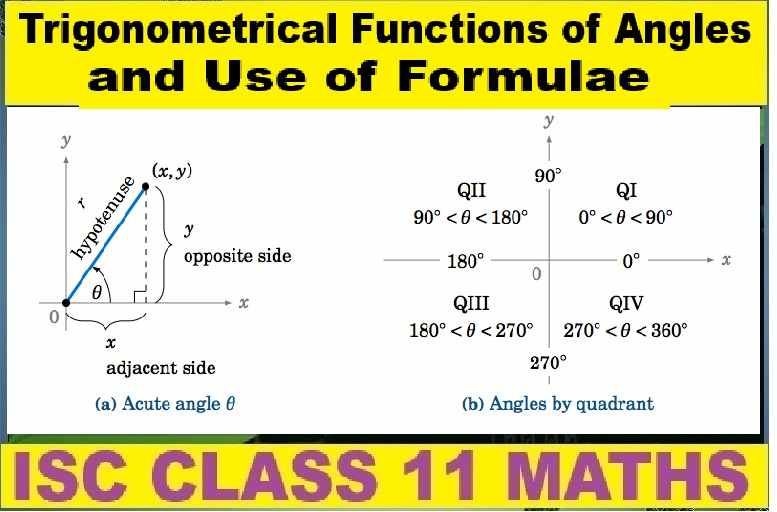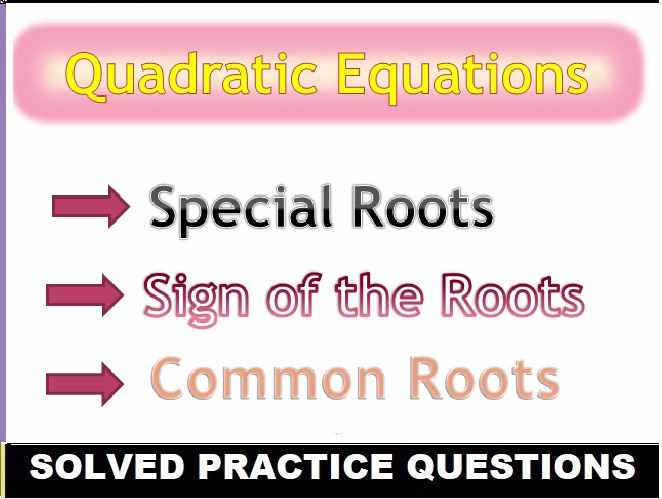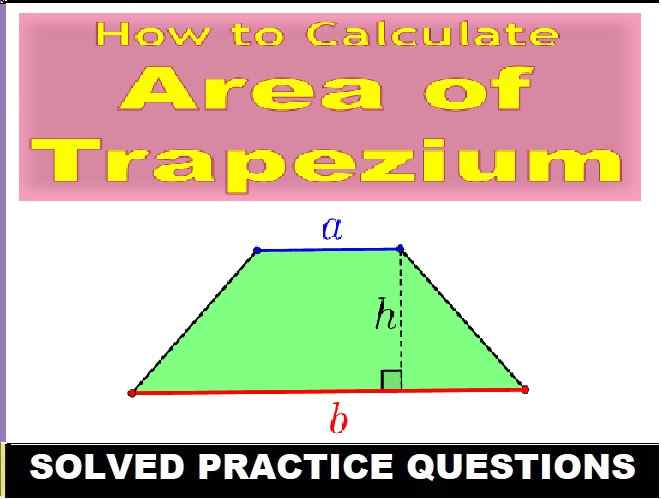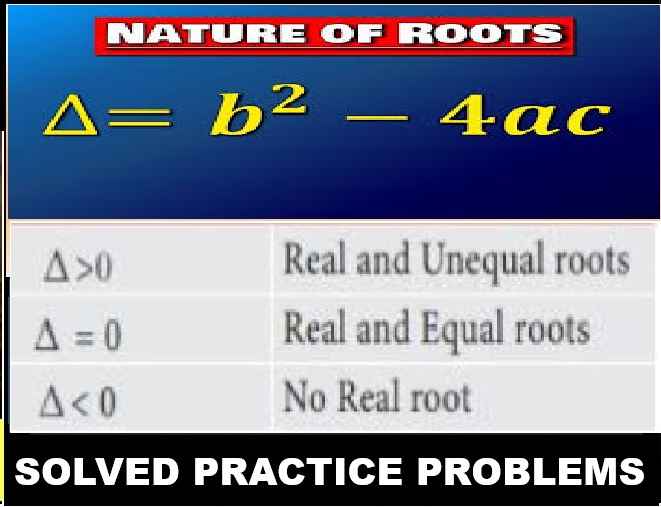Trigonometrical Functions Class 11 OP Malhotra Exe-4D ISC Maths Solutions Ch-4 Solutions. In this article you would learn about T-Functions of Angles and Use of Formulae. Step by step solutions of latest textbook has been given as latest syllabus. Visit official Website CISCE for detail information about ISC Board Class-11 Mathematics.

Trigonometrical Functions Class 11 OP Malhotra Exe-4D ISC Maths Solutions Ch-4
| Board | ISC |
| Publications | S Chand |
| Subject | Maths |
| Class | 11th |
| Chapter-4 | Trigonometrical Functions |
| Writer | OP Malhotra |
| Exe-4(D) | T-Functions of Angles and Use of Formulae. |
Exercise- 4D
Trigonometrical Functions Class 11 OP Malhotra Exe-4D Solution.
Que-1: Express the following as functions of angles less than 45° :
(i) sin 194°
(ii) sin 348°
(iii) cos 189°
(iv) sin (- 1785°)
(v) tan (3598°)
(vi) cot (- 1952°)
(vii) cosec (- 7498°).
Sol: (i) sin 194° = sin (180° + 14°) = – sin 14° [∵ sin (180° + θ ) = – sin θ]
(ii) Sin 348° = sin (360° – 12°) = – sin 12° [∵ sin (360° – θ ) = – sin θ]
(iii) cos 189° = cos (180° + 9°) = – cos 9° [∵ cos (180° + θ ) = – cos θ]
(iv) sin(- 1785°) = – sin (1785°) [∵ sin (- θ ) = – sin θ ]
= – sin (360° x 4 + 345°) = – sin (345°) [∵ sin (360° + θ) = sin θ]
= – sin (360°- 15°) = sin 15° [∵ sin (360° – θ ) = – sin θ ]
(v) tan (3598°) = tan (3600 – 2°) = tan (10 x 360° – 2°)
= tan (- 2°) [∵ tan (10 x 360° – θ ) = tan (- θ )]
= – tan 2°
(vi) cot (- 1952°) = – cot 1952° = – cot (1800° + 152°) = – cot (5 x 360° + 152°)
= – cot (152°) [∵ cot (2nπ + θ ) = cot θ ∀ n ∈ N]
= – cot (180°- 28°)
= cot 28° [∵ cot (180° – θ ) = – cot θ ]
(vii) cosec (- 7498°) = – cosec (7498°) [∵ cosec (- θ ) = – cosec θ ]
= – cosec [7200° + 298°] = – cosec [20 x 360° + 298°]
= – cosec (298°) = – cosec (360° – 62°)
= cosec 62° [∵ cosec (360° – θ ) = – cosec θ ]
= cosec (90° – 28°)
= sec 28°
Que-2: Without using tables, give the value of each of the following :
(i) sin 120°
(ii) cot 330°
(iii) sec 210°
(iv) cos 315°,
(v) cosec 675°
(vi) cos 855°
(vii) sin 4530°
(viii) sec(15π/4)
Sol: (i) sin 120° = sin (180° – 60°) = sin 60° = √3/2 [∵ sin (180°- θ ) = sin θ ]
(ii) cos 330 = cot (360° – 30°) = – cot 30° = √3 [∵ cot (360° – θ ) = – cot θ ]
(iii) sec 210° = sec (180° + 30°) = – sec 30° = −2/√3 [∵ sec (180° + θ ) = – sec θ ]
(iv) cos 315° = cos (360° – 45°) = cos 45° = 1/√2 [∵ cos (360° – θ ) = cos θ ]
(v) cosec 675° = cosec (360° + 315°) = cosec (315°) = cosec (360° – 45°)
= – cosec 45° = – √2 [∵ cosec (360° – θ ) = – cosec θ]
(vi) cos 855° = cos (720° + 135°) = cos 135° = cos (180° – 45°) = – cos 45°
= (-1/√2) [∵ cos (180° – θ ) = – cos θ]
(vii) sin 4530° = sin (4320° + 210°) = sin (12 x 360° + 210°)
= sin 210° [∵ sin (2nπ + θ) = sin θ]
= sin (180°+ 30°) = – sin 30° = (-1/2) [∵ sin (180° + θ ) = – sin θ]
(viii) sec(15π/4) = sec(4π−(π/4))
= sec(−π/4)
= sec (π/4) = √2
Que-3: With the help of tables, find the values, correct to four places of decimals, of each of the following :
(i) cos 116°
(ii) sin 267°
(iii) sin (- 263°)
(iv) cos 280° 10′
(v) tan (2015° 24′).
Sol: (i) cos 116° = cos (180° – 64°)
= – cos 64°
= – 0.4384
(ii) sin 267° = sin (270° – 3°)
= – cos 3°
= – 0.9986
(iii) sin (- 263°) = – sin (263°)
= – sin (270° – 7°)
= cos 7°
= 0.9925 [∵ sin (270° – θ ) = – cos θ ]
(iv) cos (280° 10′) = cos (270° + 10° 10′)
= sin (10° 10′)
= 0.1766
(v) tan (2015° 24′) = tan (1800° + 215° 24′)
= tan (215° 24′) = tan (180° + 35° 24′)
= tan 35° 24′ [∵ tan (180° + θ ) – tan θ ]
= 0.7107
Que-4: Find the value of sin 750° cos 300° + cos 1470° sin (- 1020°).
Sol: sin 750° = sin (720° + 30°) = sin 30° = 1/2
cos 300° = cos (360° – 60°) = cos 60° = 1/2
cos 1470° = cos (1440° + 30°) = cos (360° x 4 + 30°) = cos 30° = √3/2
sin (- 1020°) = – sin 1020° = – sin (720° + 300°) = – sin 300°
= – sin (360° – 60°) = sin 60° = √3/2
∴ sin 750° cos 300° + cos 1470° sin (- 1020°)
= (1/2) × (1/2) + (√3/2) × (√3/2)
= (1/4) + (3/4)
= 1 = R.H.S
Que-5: Evaluate (cos3θ−2cos4θ)/(sin3θ+2sin4θ), when θ = 150° .
Sol: Given θ =150°
∴ cos 3θ = cos 450° = cos (360° + 90°) = cos 90° = θ
cos 4θ = cos 600° = cos (360° + 240°)
= cos 240° = cos (180° + 60°)
= – cos 60° = – 1/2
sin 3θ = sin 450° = sin (360° + 90°) = sin 90° = 1
sin 4θ = sin 600° = sin (360° + 240°)
= sin (180° + 60°)
= – sin 60° = –√3/2
∴ (cos3θ−2cos4θ)/(sin3θ+2sin4θ)
= {0−2(−1/2)}/{1+2(−√3/2)}
= {−1/(√3−1)} × {(√3+1)/(√3+1)}
= −1/2(√3+1).
Que-6: Simplify : cos(−θ)/{sin(90∘+θ)}.
Sol: Now, cos(−θ)/{sin(90°+θ)}
= cosθ/cosθ
= 1 = R.H.S. [∵ sin (90° + 0) = – cos θ]
Que-7: tan(−θ)/{sin(540°+θ)}.
Sol: tan(−θ)/{sin(540°+θ)}
= −tanθ/[sin(360°+180°+θ)]
= −tanθ/[sin(180°+θ)]
= −tanθ/−sinθ
= 1/cosθ = secθ
Que-8: {sin(90°−θ)sec(180°−θ)sin(−θ)}/{sin(180°+θ)cot(360°−θ)cosec(90°+θ).
Sol: {sin(90°−θ)sec(180°−θ)sin(−θ)}/{sin(180°+θ)cot(360°−θ)cosec(90°+θ)
= {cosθ(−secθ)(−sinθ)}/{(−sinθ)(−cotθ)(secθ)}
= cosθ/cotθ
= sinθ.
Que-9: {sin150°−5cos300°+7tan225°}/{tan135°+3sin210°}
Sol: {sin150°−5cos300°+7tan225°}/{tan135°+3sin210°}
= {sin(180°-30°) – 5cos(360°-60°) + 7tan(180°+45°)}/{tan(180°-45°) + 3sin(180°+30°)}
= {sin30° – 5cos60° + 7tan45°}/{-tan45° – 3sin30°}
= {(1/2) – (5/2) + 7}/{-1 – (3/2)}
= {-2 + 7}/{-5/2}
= (5×2)/-5
= -2.
Que-10: If sin (7Φ + 9°) = cos 2Φ, find a value of Φ.
Sol: Given sin (7Φ + 9°) = cos 2Φ
= sin ((π/2) – 2Φ)
⇒ 7Φ + 9°
= (π/2) – 2Φ
⇒ 9Φ = 81°
⇒ Φ = 9°
Que-11: Find the values of lying between 0° and 360° when
(i) sin θ = 1/2
(ii) tan θ = – 1
(iii) sec θ = – 2
(iv) sin θ = sin 21°
(v) tan θ = – 2.0145
(vi) sin θ = cos 317°
(vii) cos θ = sin 285°.
Sol: (i) sin θ = (1/2)
= sin 30° or sin (180°- 30°); θ ≤ θ ≤ 360°
⇒ θ = 30° or 150°
(ii) tan θ = -1 = -tan (π/4)
= tan {π – (π/4)} or tan {2π- (π/4)}
= θ = π – (π/4), 2π – (π/4)
= θ = 3π/4, 7π/4
(iii) sec θ = -2 = cos θ = -1/2
= -cos (π/3) = cos {π – (π/3)} or cos {π + (π/3)}
= θ = π – (π/3), π + (π/3)
= θ = 2π/3, 4π/3
(iv) Given sin θ = sin 21° or sin (180° – 21°)
⇒ θ = 21°, 180° – 21°
⇒ θ = 21°, 159°
(v) Given tan θ = – 2.0145 = tan (π – 63° 36′) or tan (2π – 63° 36′)
⇒ θ = 180°- 63° 36′ or 360° – 63° 36′
∴ θ = 116° 24′, 296° 24′
(vi) Given sin θ = cos 317° = cos (270° + 47°)
⇒ sin θ = sin 47° or sin (180° – 47°) i.e. θ = 47° or 180° – 47°
⇒ θ = 47° or 133°
(vii) Given cos θ = sin 285° = sin (270° + 15°)
⇒ cos θ = – cos 15° = cos (180° – 15°) or cos (180° + 15°)
⇒ cos θ = cos 165° or cos 195°
⇒ θ = 165°, 195°
Que-12: If θ ° < θ < 90° and cos θ = (4/5) , find the values of
(i) cos (90° + θ)
(ii) cosec (180° + θ)
(iii) tan (360° – θ)
(iv) sin (270° – θ).
Sol: cos θ = 4/5 = [b/h]
p = 3 (using pythagorus theorem))
(i) cos (90+θ)
= – sin θ
= – 3/5
(ii) cosec(180+θ)
= -cosec θ
= – 5/3
(iii) tan (360-θ)
= -tan θ
= – 3/4
(iv) sin (270-θ)
= -cos θ
= – 4/5.
Que-13: Find six angles for which sin θ = –√3/2
Sol: Given sin θ = –√3/2 = – sin 60° = sin (180° + 60°), sin (360° – 60°)
∴ sin θ = sin (180° + 60°), sin (360° – 60°) ⇒ θ = 240°, 300°
Also, sin (600°) = sin (360° + 240°) = sin 240° = sin (180° + 60°) = – sin 60° = –√3/2
sin (660°) = sin (720° – 60°) = sin (- 60°) = – sin 60° = – √3/2
sin (960°) = sin (720° + 240°) = sin 240° = –√3/2
sin (1020°) = sin (720° + 300°) = sin 300° = sin (360° – 60°) = – sin 60° = –√3/2
Hence the required six angles for which sin θ = –√3/2 are :
240°, 300°, 600°, 660°, 960°, 1020°.
Que-14: Find all the angles between θ° and 720° whose tangent is –1/√3
Sol: Given : The value of tangent is -1/√3
From given, we have,
The value of tangent is -1/√3
tan θ = -1/√3
tan θ = tan (π – π/6)
θ = (π – π/6) ⇒ θ = 5π/6
∴ tan θ = tan 5π/6
The general solution is,
θ = nπ + 5π/6
substitute n = 0, 1, 2, 3, 4 , …………
θ = 5π/6, 11π/6
θ = 5π/6, 11π/6, 17π/6, 23π/6
θ = 150°, 330°, 510°, 690°
Que-15: Find the values of θ between 0° and 360° which satisfy the equations
(i) sin² θ = 3/4
(ii) cos 3θ = 1/2
Sol: (i) sin² θ = 3/4
⇒ sin θ = ±√3/2
When sin θ = –√3/2 = – sin (π/3) = – sin (π/3)
= sin(π + (π/3)) or sin (2π – (π/3))
⇒ θ = π + (π/3), 2π – (π/3)
⇒ θ = (4π/3), (5π/3)
Thus, the required values of θ are (π/3), (2π/3), (4π/3), (5π/3)
(ii) Given cos 3θ = 1/2 = cos π/3 = cos(2nπ ± (π/3))
3θ = 2nπ ± (π/3), n ∈ 1
θ = (2nπ/3) ± (π/9), n ∈ 1
When n = 1; θ = (2nπ/3) ± (π/9) = (6π±π)/9 = (7π/9), (5π/9)
When n = 2; θ = (4π/3) ± (π/9) = (12π±π)/9 = (13π/9), (11π/9)
When n = 3; θ = (2π) ± (π/9) but 0 < θ < 360°
θ = 2π – (π/9) = 17π/9
When n = 0; θ = π/9
Hence the required values of θ are (π/9), (7π/9), (5π/9), (13π/9), (11π/9), (17π/9).
i.e. 20°, 140°, 100°, 260°, 220°, 340°.
Que-16: If tan θ = 0.4, when θ lies between 0° and 360°, write down the possible values of θ and sin θ.
Sol: Given tan θ = 0.4 = tan (21° 48′) or tan (180° + 21° 48′)
⇒ θ = 21° 48′ or 180° + 21° 48′
⇒ θ = 21° 48′, 201° 48′ where θ ∈ (0, 360°)
∴ sin θ = sin (21° 48′) = 0.3714
and sin (201° 48′) = sin (180° + 21° 48′)
= – sin 21° 48′
= – 0.3714
Que-17: If cos x° = sin 200°, find the possible values of x between – 180° and 360°.
Sol: Given cos x° = sin 200 = sin (270° – 70°)
⇒ cos x° = – cos 70° = cos (180° – 70°) or cos (180° + 70°) or cos (- 180° + 70°)
⇒ cos x° = cos 110°, cos 250°, cos (- 110°) [∵ – 180° < x < 360°]
⇒ x° = ± 110°, 250°
If A, B, C are the angles of a triangle, prove that
Que- 18: cos C = – cos (A + B).
Sol: Since A, B and C are angles of triangle
∴ A + B + C = 180° … (1)
∴ cos C = cos (180° – A+B)
= – cos (A + B) [using eqn. (1)]
Que-19: tan {(B+C)/2} = cot A/2
Sol: tan (B+C)/2
= tan((180°−A)/2)
= tan(90°−(A/2))
= cot A/2
Que-20: {tan(B+C) + tan(C+A) + tan(A+B)}/{tan(π−A) + tan(2π−B) + tan(3π−C)} = 1.
Sol: LHS = {tan(B+C) + tan(C+A) + tan(A+B)}/{tan(π−A) + tan(2π−B) + tan(3π−C)}
= {tan(π−A) + tan(π−B) + tan(π−C)}/{tan(π−A) + tan(2π−B) + tan(2π+π−C)}
= {-tanA – tanB – tanC}/{-tanA – tanB – tanC}
= 1 RHS.
Que-21: If A, B, C, D are the angles of a quadrilateral, prove that cos(1/2) (A + B) + cos(1/2) (C + D) = 0.
Sol: since A, B, C and D are the angles of quadrilateral
A + B + C + D = 360°
= A + B = 360° – (C + D)
![]()
= cos(1/2) (A + B) + cos(1/2) (C + D) = 0.
Que-22: If A, B, C, D are the angles of a cyclic quadrilateral, show that cos A + cos B + cos C + cos D = 0.
Sol: For cyclic quadrilateral, the opposite angles are supplementary. This means that ∠A + ∠C = ∠B + ∠D = 180°
Since ABCD is a cyclical quadrilateral
⇒ ∠A + ∠C = 180°
⇒ ∠A = 180° – ∠C
Taking cosine of both sides, we get-
⇒ cosA = cos(180° – ∠C)
Substituting cos(180 – θ) = -cosθ
⇒ cosA = -cosC ∴ cosA + cosC = 0
Similarly, cosB + cosD = 0
cosA + cosB + cosC+ cosD = 0
LHS = RHS
Que-23: Find the value of {sin300°tan330°sec420°}/{tan135°sin210°sec315°}.
Sol: Given : {sin300°tan330°sec420°}/{tan135°sin210°sec315°}
Given expression
= {sin(360°−60°).tan(360°−30°).sec(360°+60°)}/{tan(180°−45°).sin(180°+30°).sec(360°−45°)}
= {(−sin60°).(−tan30°).sec60°}/{(−tan45°).(−sin30°).sec45°}
= {sin60°.tan30°.sec60°}/{tan45°.sin30°.sec45°}
= {(√3/2).(1/√3).2}/{1.(1/2).√2
= √2
Que-24: If A, B, C be the angles of a triangle, prove that sin {sin(B+C)+sin(C+A)+sin(A+B)}/{sin(π+A)+sin(3π+B)+sin(5π+C)} = -1
Sol: Given : {sin(B+C)+sin(C+A)+sin(A+B)}/{sin(π+A)+sin(3π+B)+sin(5π+C)} = -1
LHS = {sin(π-A)+sin(π+B)+sin(π-C)}/{-sinA – sinB – sinC}
= {sinA + sinB + sinC}/-{sinA + sinB + sinC}
= -1.
LHS = RHS.
–: End Trigonometrical Functions Class 11 OP Malhotra Exe-4D ISC Maths Ch-4 Solution :–
Return to :- OP Malhotra ISC Class-11 S Chand Publication Maths Solutions
Thanks
Please share with your friends


